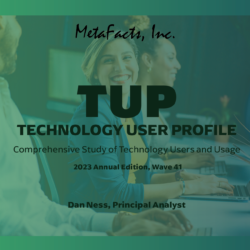Background:
ASUS made its name on well-crafted yet lower-priced computers. This continues its appeal to budget-conscious employers. In the mad dash to support remote workers with adequate technology, at least among those employers who deigned to do so, a higher-than-average share turned to brands such as ASUS. With Microsoft Windows 10 support expiring, many of the ASUS computers in the installed base will need refreshing soon. However, with the prospect of higher costs spurred by challenges brought on by US tariffs, likely supply chain challenges, and general economic disruptions, employers are at a crossroads with their technology investments. Remote work patterns have remained generally unchanged since the first year of Covid lockdowns, and the expectation is that they will continue for most employers. This makes the ASUS base worthy of consideration since many will be due for replacements.
Approach:
This one-time TUP data cut profiles active employed computer users by those using ASUS versus users of any other work computer brand. We profile the age of computers in active use, a comprehensive demographic profile of current customers and usage levels in hours and breadth of activities. MetaFacts further identifies the activities conducted most often, including remote work status. Furthermore, we profile the AI attitudes and behaviors of ASUS and non-ASUS work computer users.
These results are based on the MetaFacts TUP/Technology User Profile 2024 datasets. Of these, 2,340 respondents represent employed online adults in the US, Germany, the UK, and Japan who actively use a work/employer-provided computer.
The TUP data cut features a set of standardized cross-tabulations from TUP/Technology User Profile 2024 in Excel format. It also includes a topline summary.

